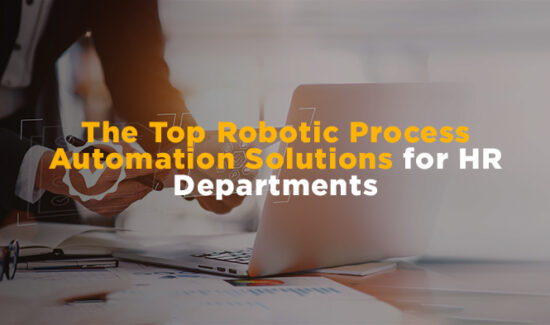Understanding the Difference: BPM vs. BPMS


You can’t think of Business Process Management Software (BPMS) without Business Process Management (BPM) and vice versa. Although the two terms share some commonalities, they have major differences, so it’s no wonder why people get so mixed up when hearing one or the other term.
Of course it is never straight forward, because to some it is business process mapping, others think business process modeling, and if that is not confusing enough, then even the term business process management is used differently around the world. Mark McGregor, BPM expert and strategy consultant, supports this when he says,
“In Germany for instance IDS Scheer and Signavio will have used business process management to refer to the modeling and improving of processes. Whereas in the USA people tend to assume that business process management is automation. Small wonder that I wrote a piece a few years ago about why BPM was too confusing to be taken seriously!”
What is BPM?
Analyst house, Gartner Inc., defines BPM as a discipline that uses various methods to discover, model, analyze, measure, improve, and optimize business processes. A business process coordinates the behavior of people, systems, information, and things to produce business outcomes in support of a business strategy. Processes can be structured and repeatable or unstructured and variable. Though not required, technologies are often used with BPM. BPM is key to align IT/OT investments to business strategy.
This discipline involves any combination of modeling, automation, execution, control, measurement and optimization of business activity flows, in support of enterprise goals, spanning systems, employees, customers and partners within and beyond the enterprise. BPM expert, Nathaniel Palmer, explains further when he writes,
- Modeling refers to identifying, defining and making a representation of the complete process to support communication about the process. There is no single standard way to model.
- Automation refers to the work done in advance to assure the smooth execution of the process instances. Often, this means writing software, but it can include building machinery or even creating signage for clarity.
- Execution means that instances of a process are performed or enacted, which may include automated aspects.
- Control means that there is some aspect of ensuring that the process follows the designed course. This can be strict control and enforcement or loose control in the form of guidelines, training and manual practices.
- Measurement means that effort is taken to determine quantitatively how well the process is working for serving the needs of customers.
- Optimization means that the discipline of BPM is an ongoing activity that builds over time to steadily improve the measures of the process. Improvement is relative to the goals of the organization and ultimately for meeting the needs of customers.
- Enterprise refers to a business organization. This can be any organization where people are working together to meet common goals; it does not need to be a large or for-profit organization.
In its most simplest form, BPM is a way of looking at and then controlling the processes that are present in an organization. It is an effective methodology to use in times of crisis to make certain that the processes are efficient and effective, as this will result in a better and more cost efficient organization.
McGregor defines it as a generic term for a collection of techniques and methods to improve business outcomes through a greater understanding of how an organization works, and how it needs to work in the future.
“I say this because it can be argued that techniques such as Six Sigma, Work Out and Lean all have a part to play, along with perhaps applying fashion approaches such as Design Thinking,” McGregor adds.
What is BPMS?
BPMS is a software tool used to improve an organization’s business processes through the definition, automation, and analysis of business processes. It also acts as a valuable automation tool for businesses to generate a competitive advantage through cost reduction, process excellence, and continuous process improvement. As BPM is a discipline used by organizations to identify, document, and improve their business processes; BPMS is used to enable aspects of BPM.
Practicing traditional manual processes makes the business owners kill time and burn money on futile elements of their businesses. Here’s where BPMS comes into picture. BPMS helps your organization improve your business processes with the help of analysis and automation. BPMS should be able to let you model, create, edit, and run all of the business processes in your organization and also collect data and analytics.
BPM solutions also help coordinate the improvement of staff productivity by automating the daily workforce tasks they would be doing manually if a BPM system wasn’t in place. By implementing BPMS into your organization, it helps to put into effect quick responses to challenges and opportunities, at the same time helping business leaders make the right decisions for overall company growth.
What are the differences?
So, the differences here are quite clear. Fundamentally BPM is a method, technique or way of being/doing and BPMS is a collection of technologies to help build software systems or application to automate processes. When looked at today, you might argue that BPMS can be applied to a range of process automation technologies, from the original BPMS concept, the the old style workflow automation which is making a comeback in new forms, to the current fashion of Robotic Process Automation (RPA) through to the next wave that people see as Intelligent Automation.
“Maybe we need to think of BPM being about how you do it, and BPMS (read automation) being about ways of doing it,” suggested McGregor.
Are there any misconceptions?
We asked McGregor about some common misperceptions about BPM and BPMS and here’s what he had to say.
Perhaps the two biggest misconceptions are that people think BPM is just about analyzing and improving processes. Instead the starting point is in the first letter “Business” fundamentally BPM as a discipline when applied correctly can have a profound impact on business, identifying new business opportunities, understanding failing business lines, uncovering poor service and leading to reorganizations of the organization itself. Many of these opportunities come from looking at how you operate now (process), but improving a process that is not needed or is a barrier from a customer perspective is actually causing more waste.
The second is that with BPMS you can actually automate true end to end processes. If you take an example of order to cash in a business to business environment, how many processes or sub-processes are involved? How many different systems are involved? and what about the tasks that are carried out manually? Sure there are tasks or activities that can be automated with a BPMS, but many will also be automated with ERP or other systems. In this case you can still apply BPM, but you would likely want to use a number of different process automation techniques, ideally in harmony to best automate all that you can in that process.
Looking for more? Download our Business Process Management Buyer’s Guide for free to compare the top-24 products available on the market with full page vendor profiles. The guide includes four key capabilities to look for in a BPM platform, plus questions to ask before purchasing. It’s truly the perfect resource for anyone looking to find the right BPM for their business/organization, or those looking to replace an existing one.
And don’t forget to follow us on Twitter, LinkedIn and Facebook for all the latest in Work Tech!
























